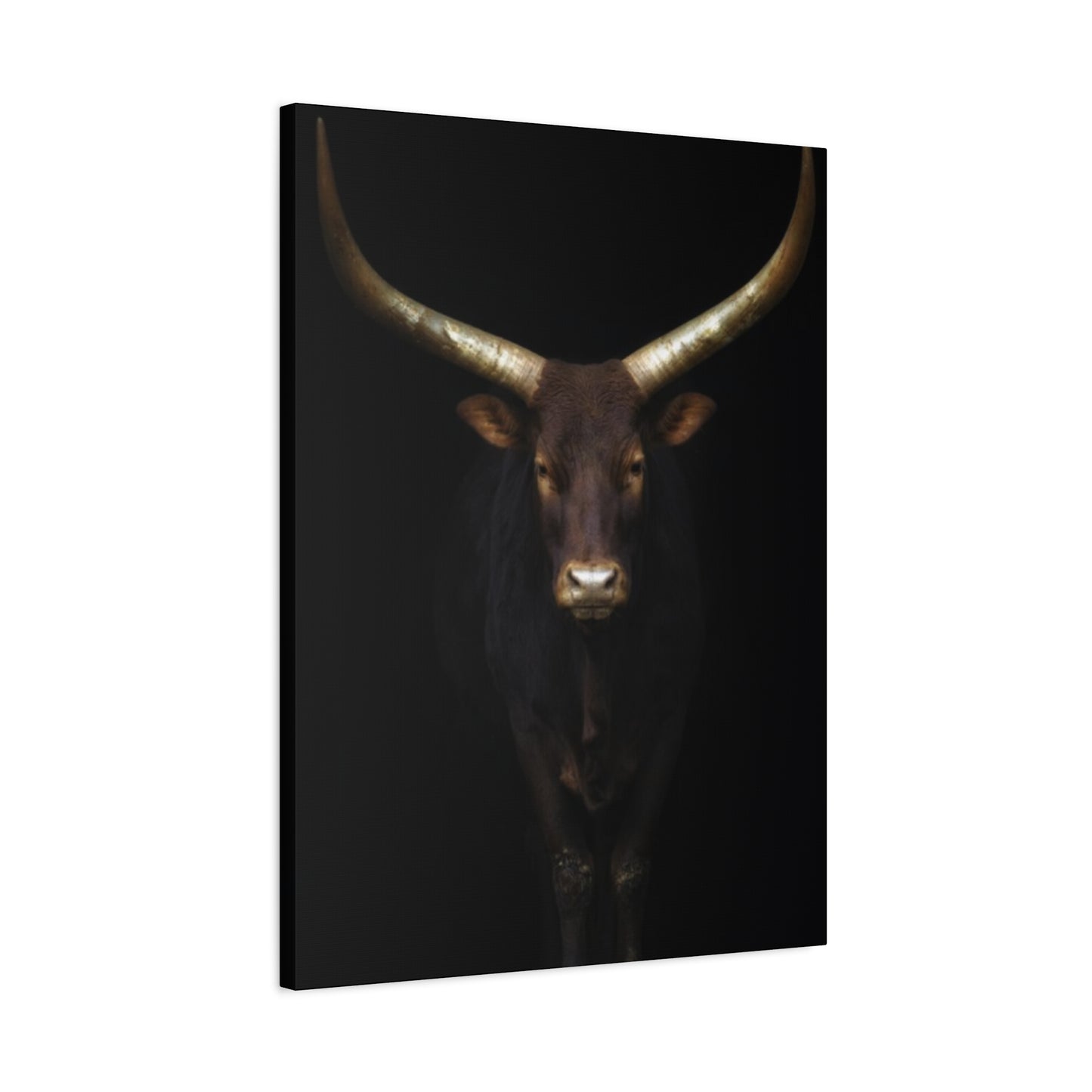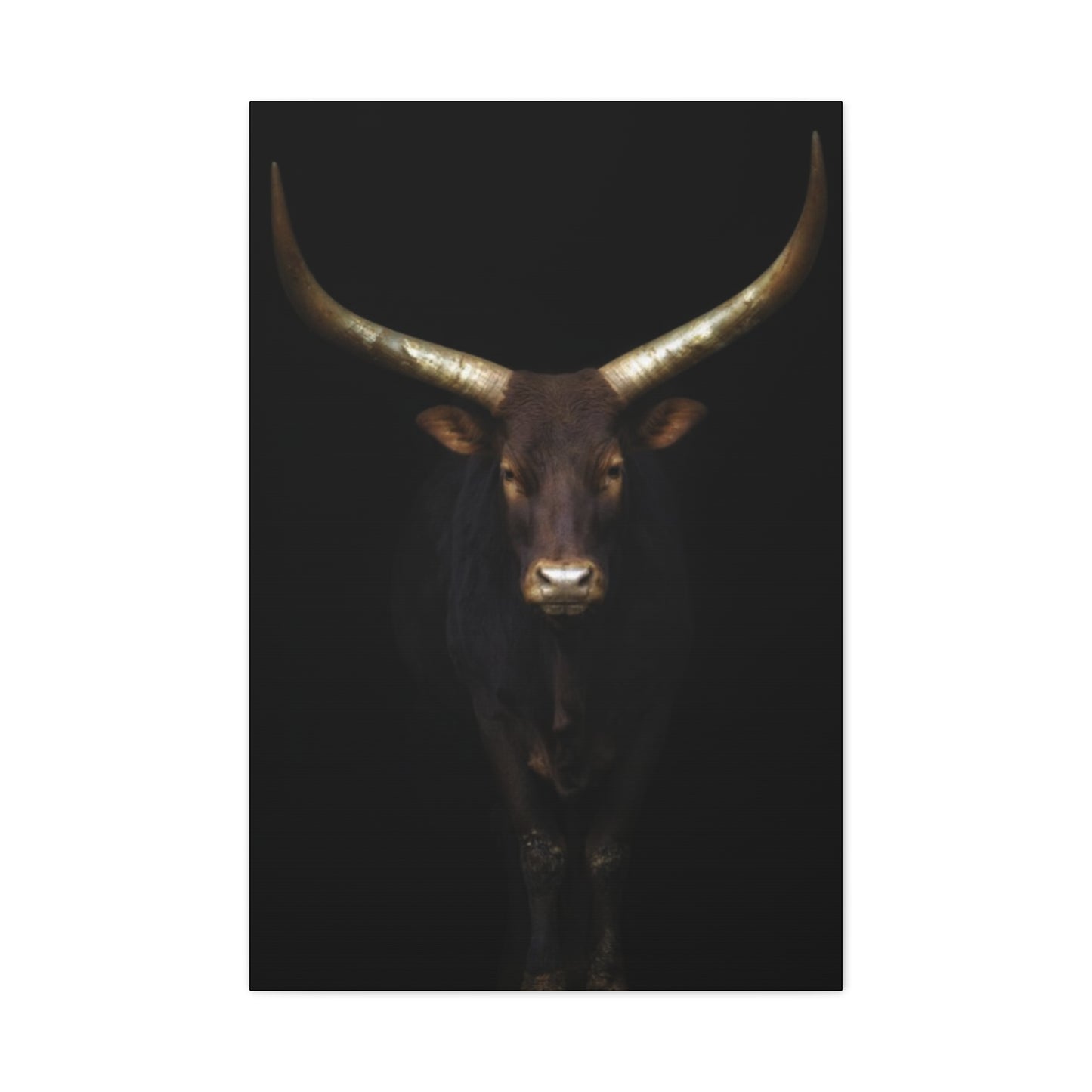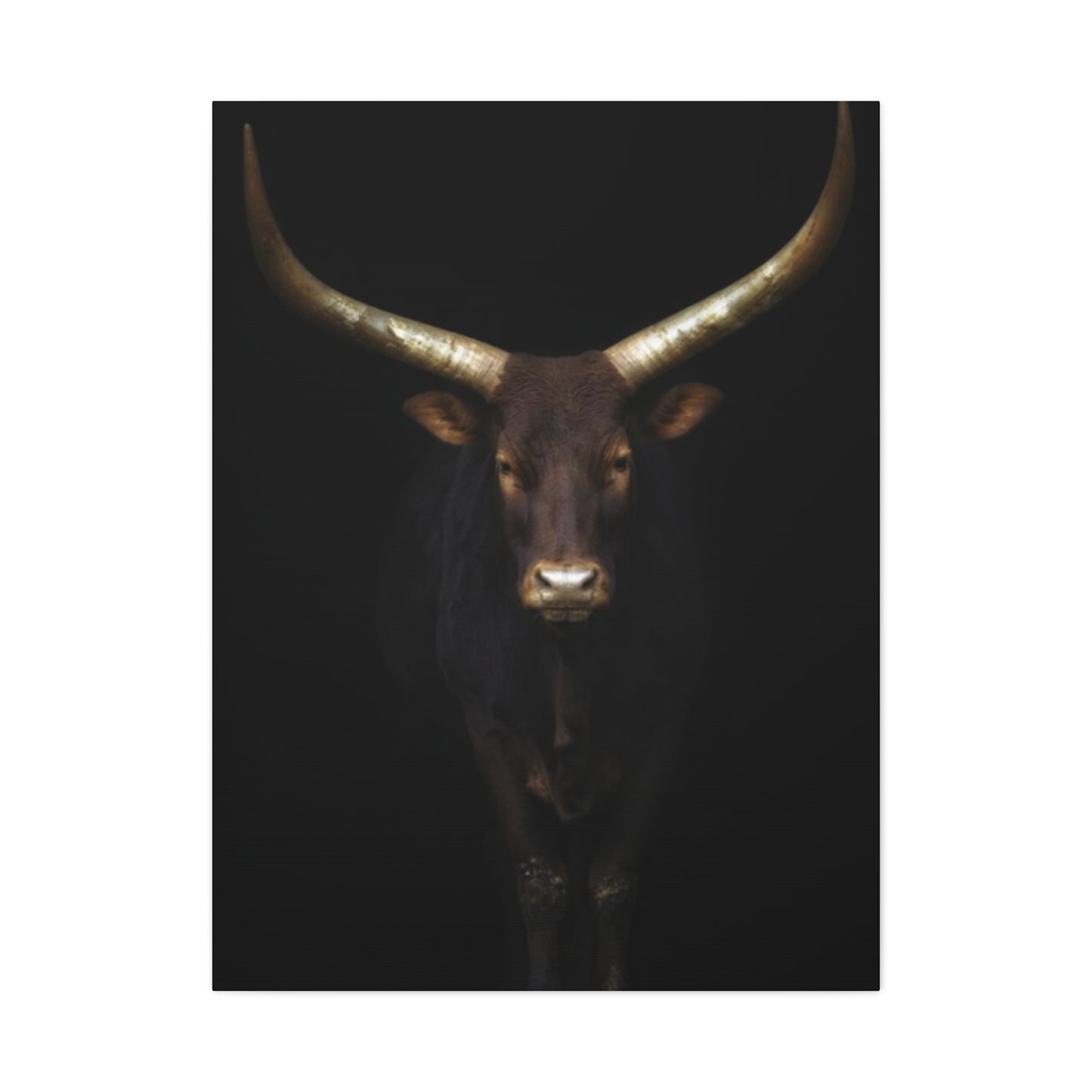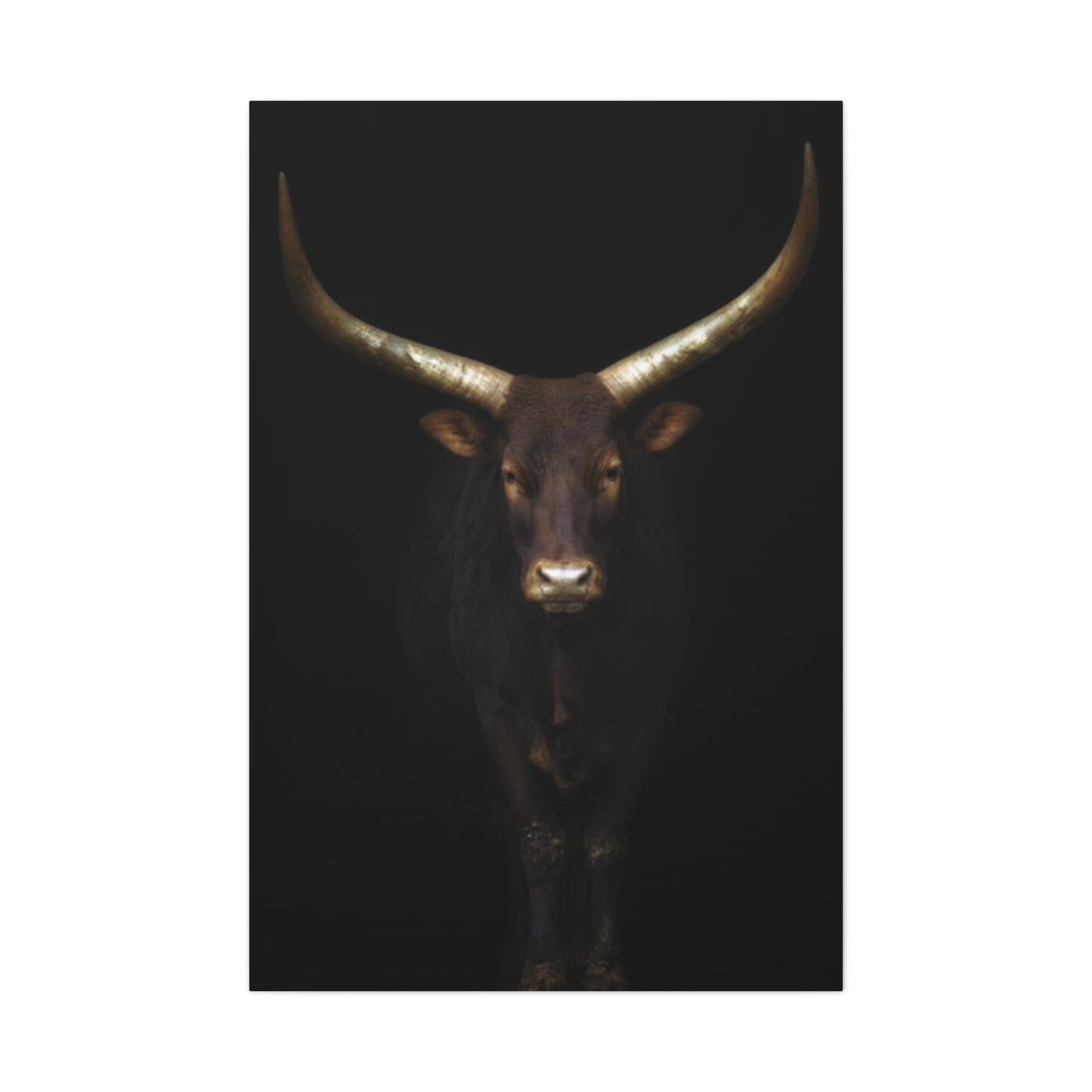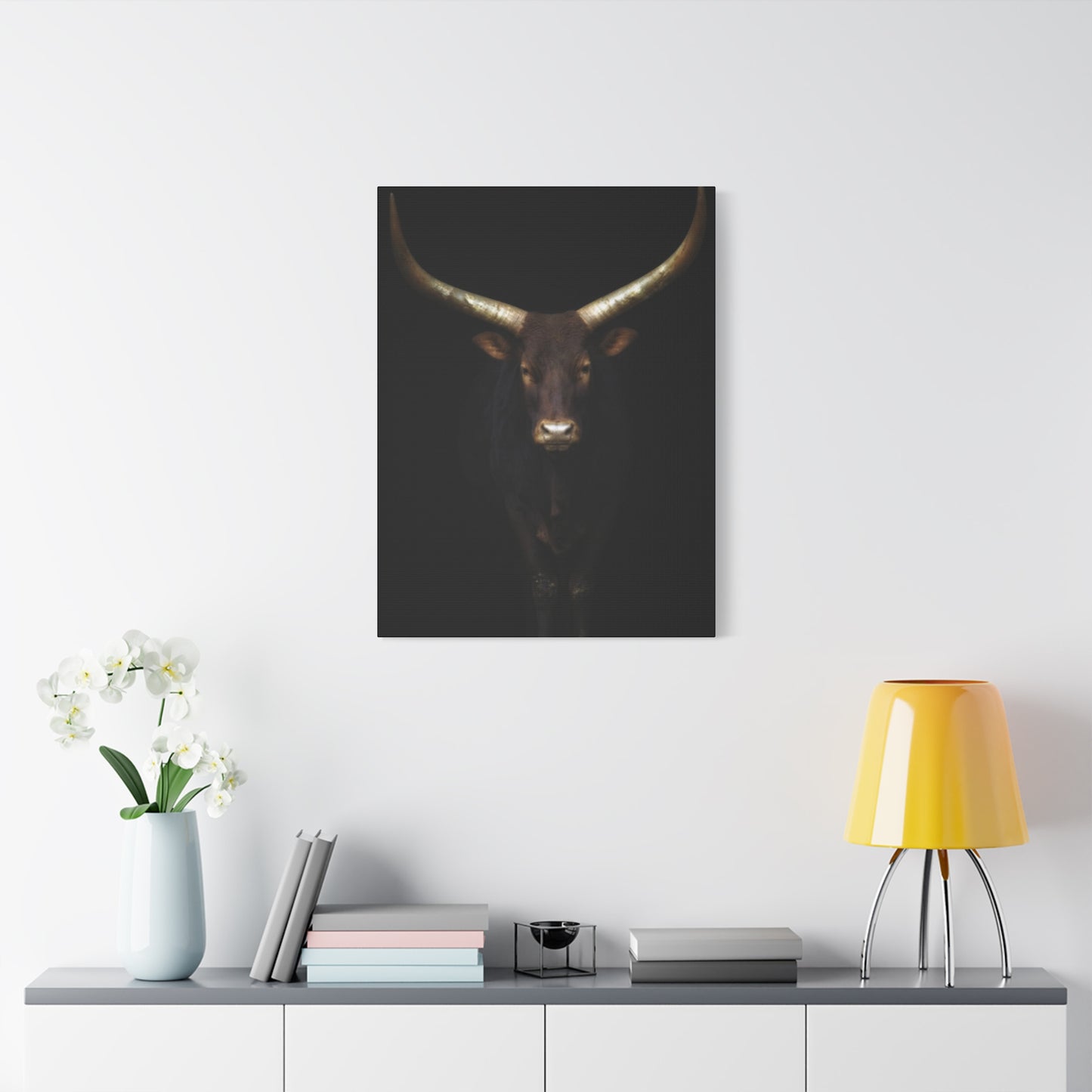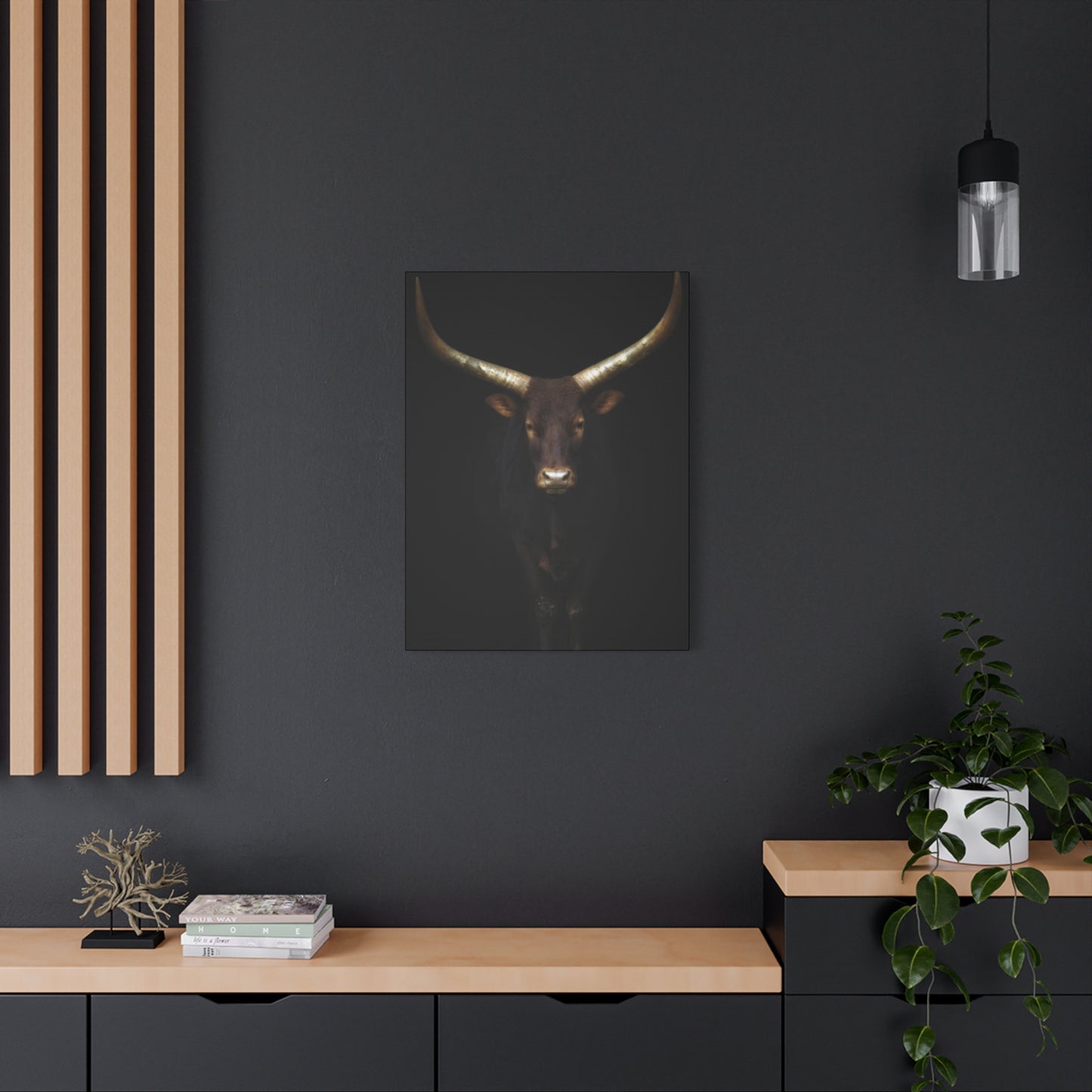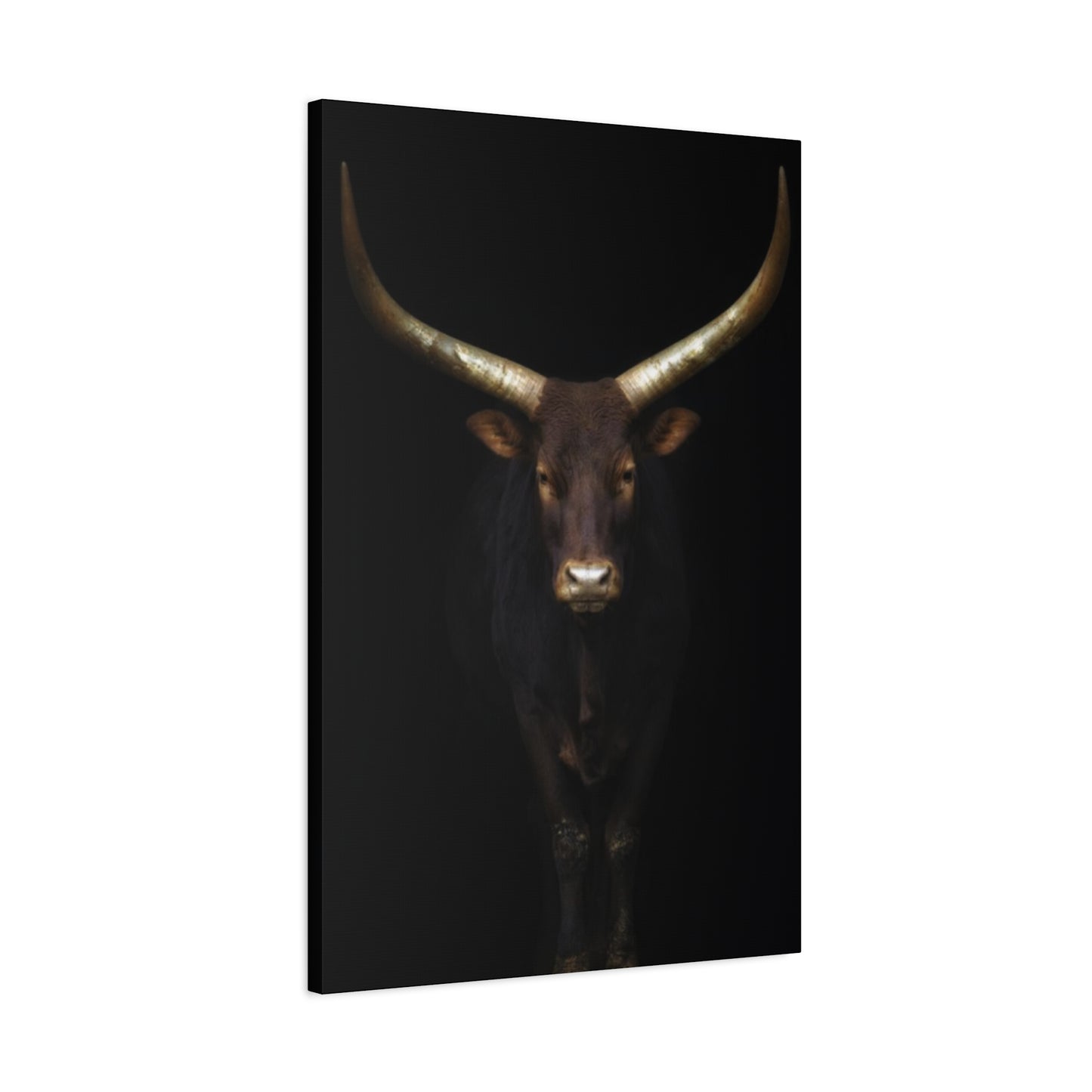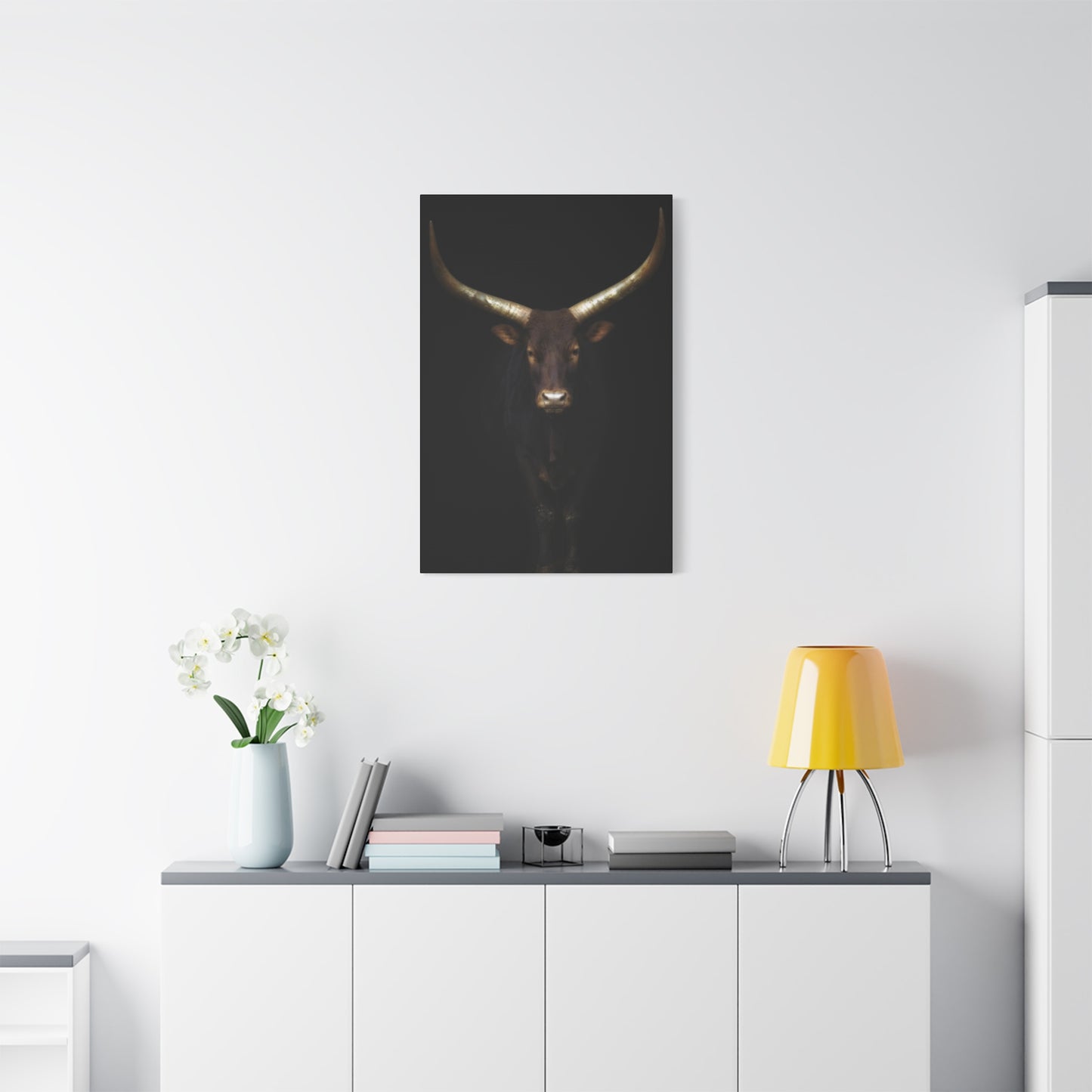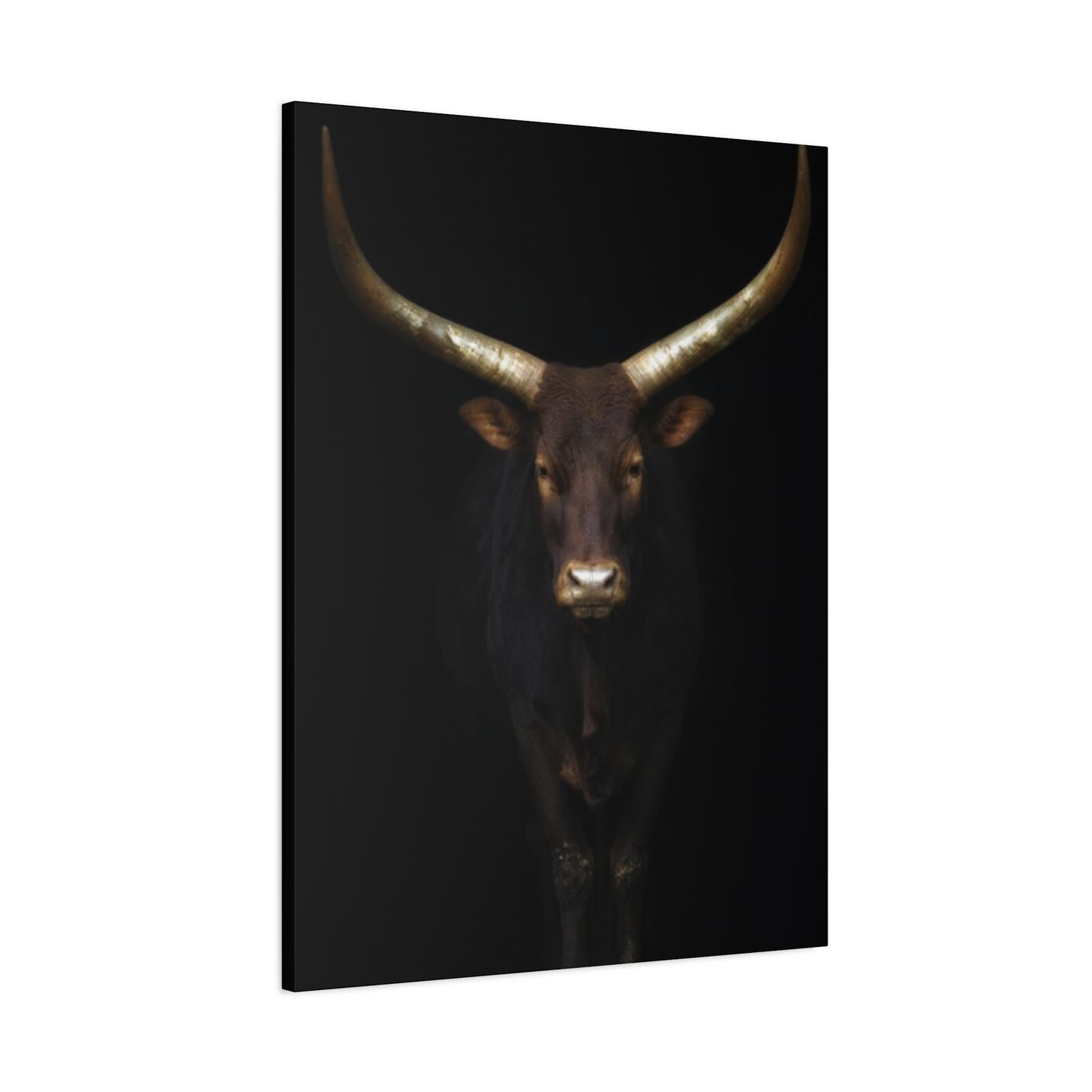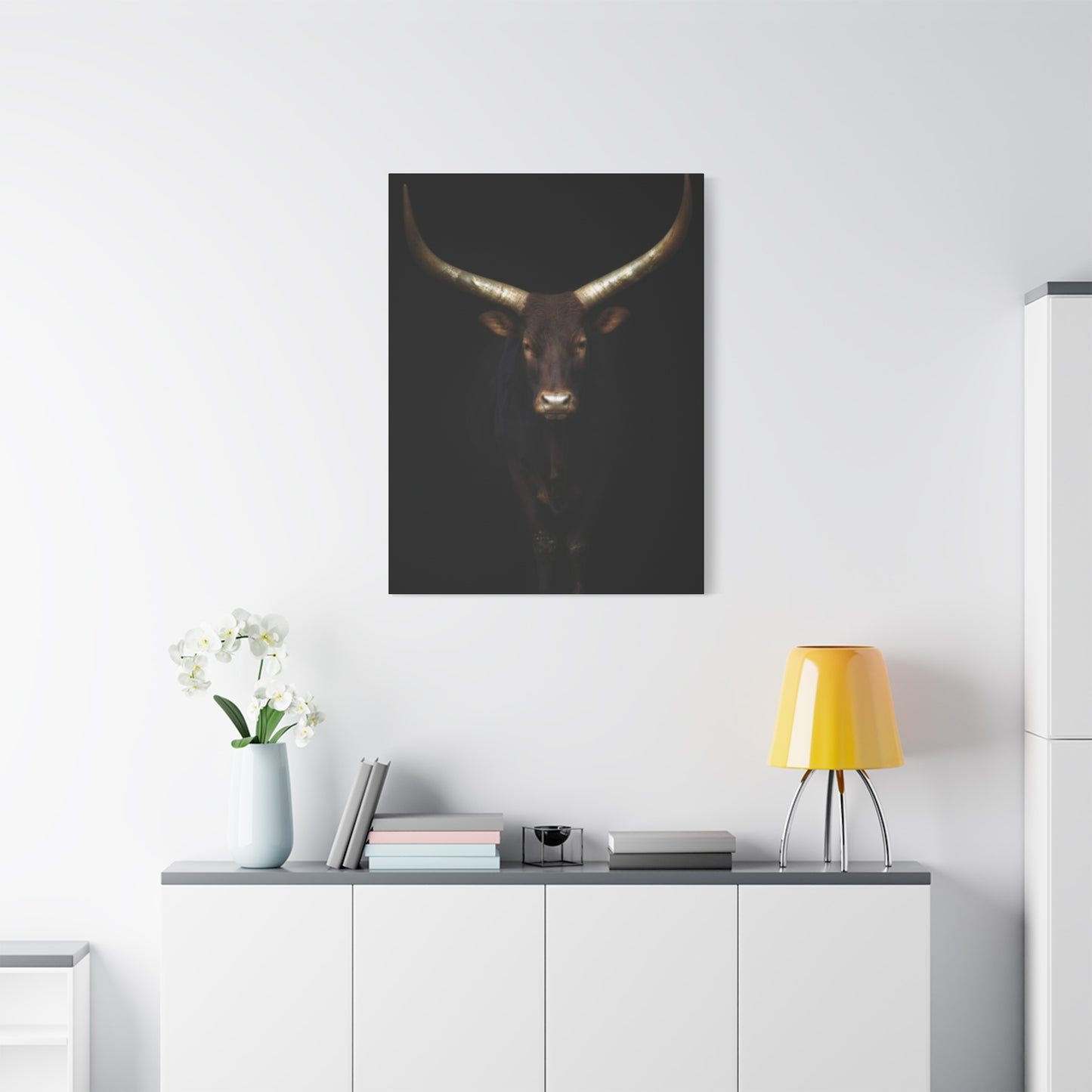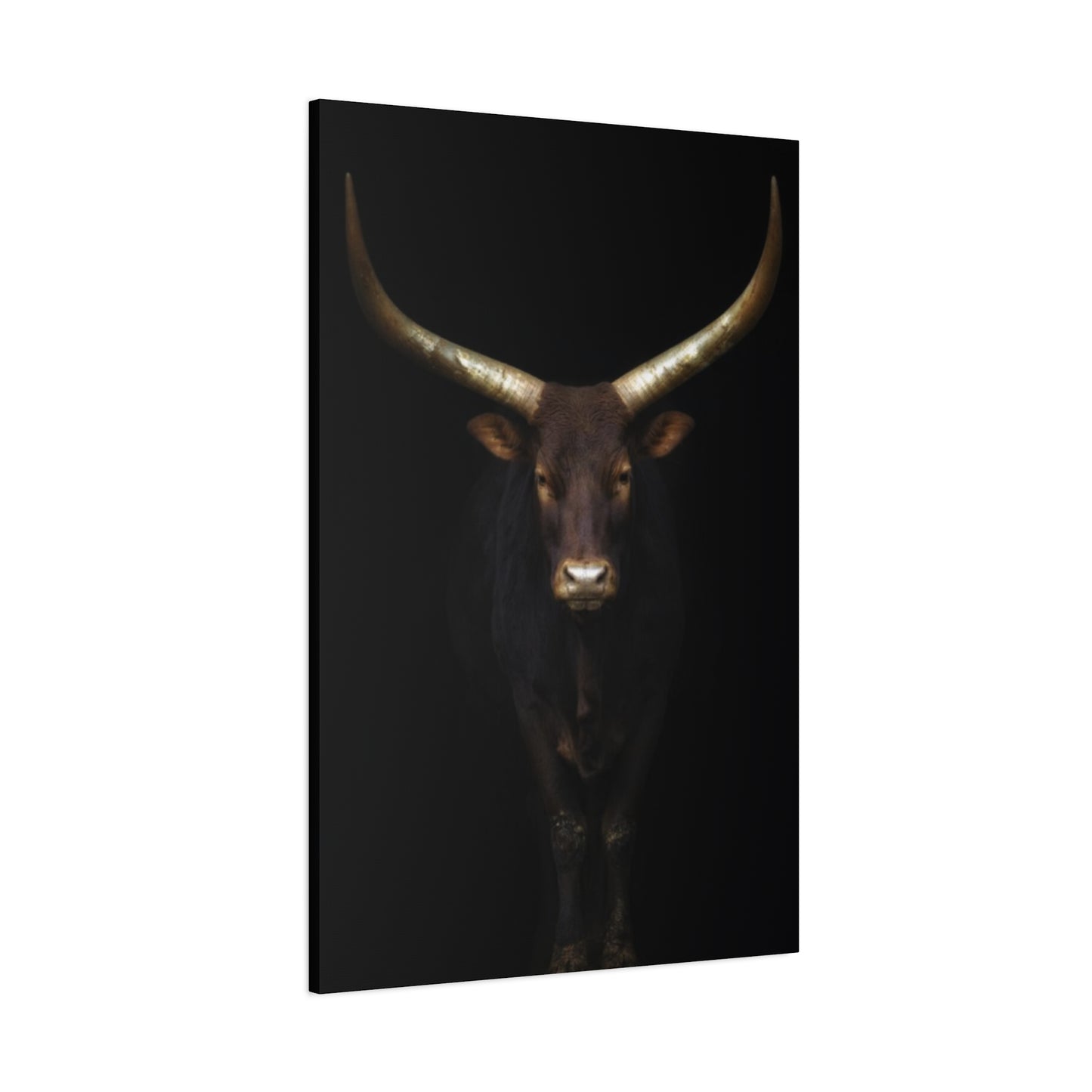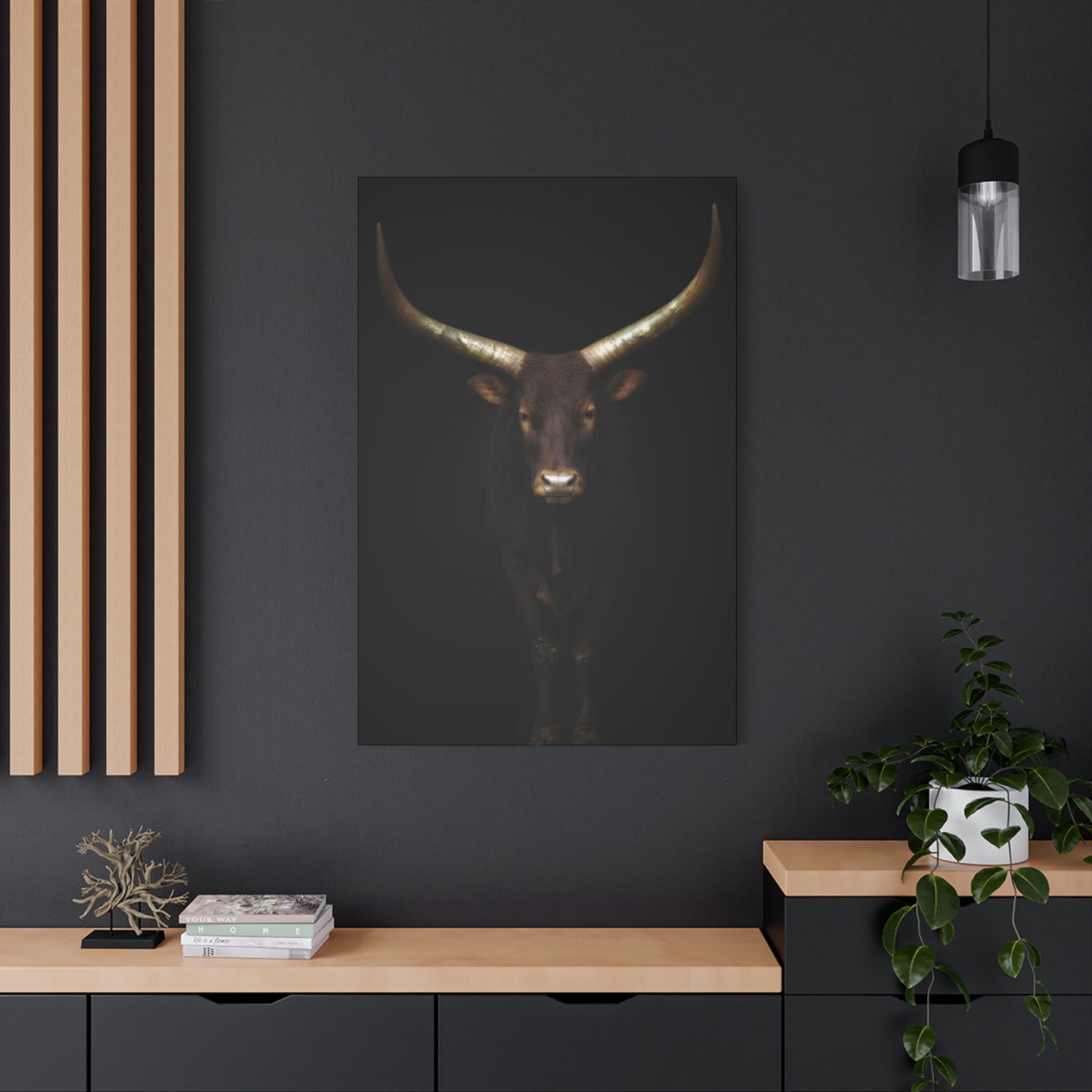The Bold Beauty of Buffalo Longhorns: How Wall Art Captures the Spirit of the Wild
The captivating presence of bison adorned with impressive curved horns has long fascinated artists, photographers, and interior design enthusiasts alike. These magnificent creatures, symbols of untamed wilderness and raw natural power, have become increasingly popular subjects for residential and commercial wall displays. Their commanding stature and distinctive horn formations create visual statements that resonate deeply with those seeking to infuse their living environments with elements of natural grandeur and rustic authenticity.
The appeal of these animals extends far beyond mere aesthetic appreciation. Throughout centuries, they have represented resilience, endurance, and the indomitable spirit of wilderness landscapes. When captured through the lens of skilled photographers or rendered by talented artists, these creatures transform into powerful decorative elements that can dramatically alter the atmosphere of any interior space. Their dark, textured coats contrasting against weathered horn structures create compositional dynamics that draw the eye and command attention in ways few other natural subjects can achieve.
Contemporary interior design has witnessed a remarkable resurgence in nature-inspired decorative elements, with imagery featuring these formidable animals leading this aesthetic movement. Homeowners, business proprietors, and design professionals increasingly recognize the transformative potential these visual representations possess. Whether displayed in residential living areas, corporate environments, hospitality venues, or creative workspaces, such imagery introduces an element of primal energy and natural authenticity that synthetic or abstract designs rarely accomplish.
The versatility of these visual representations allows them to complement numerous design philosophies while maintaining their distinctive character. From modern minimalist settings where a single striking image serves as the focal point, to rustic lodge-inspired interiors where multiple pieces create immersive environmental storytelling, the adaptability of this subject matter proves remarkably accommodating. The inherent contrast between the animals' dark coloring and the varied backgrounds against which they're photographed or painted provides designers with rich opportunities for creating visual harmony or intentional dramatic tension within spatial compositions.
Beyond their decorative function, these representations carry symbolic weight that adds layers of meaning to interior environments. They evoke narratives of survival, natural selection, territorial authority, and the raw beauty of ecosystems operating according to primordial patterns. For those who value connections to natural heritage, wilderness preservation, or simply the aesthetic pleasure derived from observing magnificent wildlife, these images serve as daily reminders of worlds existing beyond urban confines and domesticated landscapes.
Striking Visual Displays Featuring Horned Bison for Distinctive Environments
Creating memorable interior spaces requires careful consideration of elements that contribute both visual interest and atmospheric character. Imagery showcasing bison with prominent horn formations delivers on both fronts, offering design solutions that satisfy practical decorative needs while simultaneously elevating spatial ambiance. These visual compositions work particularly effectively in environments where strength, stability, and natural authenticity serve as desired thematic elements.
The physical presence these images project makes them particularly suitable for spaces requiring confident aesthetic statements. Large-format reproductions can anchor entire room designs, providing visual weight that balances architectural features or furniture arrangements. Medium-sized presentations work beautifully in gallery wall configurations, while smaller iterations find purpose in intimate spaces or as complementary elements within larger decorative schemes. The scalability of this subject matter ensures applicability across diverse spatial requirements and design objectives.
Color palettes inherent to these subjects typically feature rich earth tones, deep shadows, and textural contrasts that harmonize naturally with numerous interior color schemes. The predominantly dark coloration of bison coats provides dramatic contrast against lighter wall surfaces while integrating seamlessly with darker, moodier color applications. The weathered appearance of horn structures introduces organic texture that adds dimensional interest even in two-dimensional representations. These natural color and texture characteristics make such imagery remarkably forgiving in terms of coordination with existing decor elements.
Lighting considerations play crucial roles in maximizing the impact of these visual presentations. Properly illuminated, the textures and tonal variations within quality photographs or paintings become more pronounced, creating depth and visual complexity that rewards sustained viewing. Natural light can highlight the organic textures and subtle color variations within the subjects, while artificial lighting can be directed to create dramatic shadows and emphasize particular compositional elements. The interplay between light and shadow across the subjects' forms adds temporal variation to their appearance, ensuring the imagery remains visually engaging throughout different times of day.
The emotional resonance these images generate contributes significantly to their effectiveness as decorative elements. Unlike purely abstract or geometric designs that engage viewers primarily on aesthetic levels, representations of these powerful animals tap into deeper psychological connections humans maintain with the natural world. They evoke feelings of awe, respect, and connection to something larger and more enduring than human constructs. This emotional dimension transforms them from mere decorative objects into meaningful components of personal or professional environments.
Material and presentation choices significantly influence how these images function within spaces. Canvas prints offer texture and depth that complement the organic subject matter, while metal prints provide contemporary edge and enhanced durability. Framed photographs behind glass deliver classic presentation with protective benefits, whereas frameless acrylics create floating visual effects that emphasize the subjects themselves. Each presentation method introduces subtle variations in how viewers perceive and interact with the imagery, allowing customization based on specific spatial requirements and aesthetic preferences.
Dramatic Photographs Showcasing Bison with Prominent Horn Structures
Photographic artistry reaches remarkable heights when skilled practitioners turn their lenses toward these magnificent subjects. The technical challenges inherent in capturing these powerful animals in compelling compositions demand considerable expertise, patience, and understanding of animal behavior. The resulting images represent not merely documentary records but artistic interpretations that elevate subjects through thoughtful compositional choices, lighting mastery, and precise timing.
Horn structures serve as defining visual characteristics that distinguish these subjects and provide compelling focal points for photographic compositions. The graceful curves, weathered surfaces, and impressive spans of mature horn formations create natural compositional elements that photographers can emphasize through framing, lighting, and perspective choices. Close-up photographs highlighting horn details reveal textures, striations, and color variations that broader compositions might minimize, offering viewers intimate encounters with these distinctive anatomical features.
Seasonal variations introduce dramatic changes in how these subjects appear and how photographers can approach their documentation. Winter photography captures animals with frosted coats and breath clouds visible in cold air, creating ethereal and dramatic visual effects. Spring and summer imagery showcases the rich brown tones of healthy coats against vibrant vegetation, while autumn compositions benefit from golden light and earth-toned landscapes that harmonize beautifully with animal coloring. Understanding seasonal characteristics allows collectors to select imagery that complements personal aesthetic preferences or reinforces desired spatial atmospheres.
Behavioral moments captured in photographic form add narrative dimension and visual interest that static portraits cannot match. Images showing animals engaged in natural behaviors like grazing, interacting with herd members, or responding to environmental stimuli create dynamic compositions with implied motion and story. These behavioral captures often prove more engaging over extended viewing periods than purely aesthetic portraits, as they invite viewers to imagine the moments before and after the captured instant.
Technical photographic considerations significantly impact final image quality and suitability for large-format interior display. High-resolution captures preserve fine details that become apparent when images are enlarged for wall presentations, whereas lower-resolution images may appear soft or lack visual crispness at larger sizes. Proper exposure preserves detail in both shadow areas of dark coats and highlight regions of horn structures, ensuring visual information exists throughout the tonal range. Photographers who master these technical aspects produce images that maintain visual integrity regardless of presentation size or viewing distance.
Commanding Horn-Adorned Bison Imagery for Residential Wall Displays
Selecting appropriate imagery for residential applications requires balancing personal aesthetic preferences with practical considerations related to space characteristics, existing decor, and desired atmospheric effects. Representations of these imposing animals offer considerable flexibility while maintaining distinctive character that prevents them from becoming generic or forgettable decorative elements. Their strong visual presence ensures they function as genuine focal points rather than merely filling wall space.
Living areas benefit particularly from these powerful visual statements, as they set tonal expectations for entire homes. An impressive image positioned prominently in a main gathering space immediately communicates values related to nature appreciation, strength, and perhaps unconventional design sensibilities. Guests encountering such imagery form immediate impressions about occupants' aesthetic preferences and personal values, making these selections significant components of how homes communicate identity.
Private spaces like bedrooms or personal offices allow for more intimate or contemplative imagery selections. Quieter compositions featuring solitary animals in reflective poses might suit these environments better than dynamic action shots more appropriate for social spaces. The psychological impact of imagery in spaces where occupants spend considerable time warrants careful consideration, as these visual elements subtly influence mood and mental state over extended exposure periods.
Scale matching between imagery and available wall space represents a critical success factor in residential applications. Undersized images on expansive walls appear tentative and fail to achieve intended visual impact, while oversized presentations in smaller spaces can overwhelm and create uncomfortable viewing experiences. Proper scale relationships ensure imagery enhances rather than dominates or disappoints, achieving harmonious integration within spatial contexts.
Nature's Raw Power Captured Through Bison Horn Imagery
The symbolic representation of natural force and endurance finds perhaps no better visual embodiment than in depictions of these formidable animals. Their physical capabilities, adapted over millennia for survival in challenging environments, manifest visibly in their muscular builds, protective coats, and weaponized cranial protrusions. Imagery capturing these physical attributes taps into deep-seated human recognition of and respect for natural power that exists independent of human influence or control.
Compositional choices that emphasize mass and physical presence communicate strength most effectively. Low camera angles that position viewers looking slightly upward at subjects create impressions of imposing size and dominance. Tight framing that fills image frames with animal forms minimizes environmental distractions and focuses attention on physical characteristics. Lighting that emphasizes muscular definition through shadow and highlight patterns reinforces perceptions of power and capability. These technical and artistic decisions combine to create images that project maximum impact and presence.
Horn formations function as natural symbols of defensive and offensive capability, adding menacing elegance to already impressive physical packages. Photographers and artists who emphasize these structures through compositional placement, lighting, or selective focus create images with particular potency and visual drama. The curves and points of well-developed horns lead viewer eyes through compositions while simultaneously suggesting latent danger that commands respect and caution. This combination of aesthetic beauty and implied threat creates psychological complexity that engages viewers on multiple levels.
Environmental adversity captured in imagery reinforces themes of survival and adaptation. Photographs showing these animals thriving in harsh conditions, whether extreme cold, scorching heat, or challenging terrain, visually demonstrate their evolutionary success and resilience. Such images carry implicit messages about persistence, adaptation, and the capacity to endure challenges that resonate metaphorically with human experiences. These symbolic dimensions add conceptual depth that transforms decorative imagery into visual philosophy.
The herd dynamics visible in some compositions introduce social dimensions to otherwise individual-focused imagery. Photographs showing multiple animals interacting, moving together, or occupying shared space hint at complex social structures and cooperative behaviors. These group compositions can symbolize community, collective strength, or the power of unified action. For viewers seeking imagery with social or collaborative symbolism, group compositions offer richer metaphorical possibilities than solitary animal portraits.
Distinctive Interior Statements Through Bison Horn Imagery
Creating memorable spaces requires moving beyond safe, conventional decorating choices toward selections that express individual character and perspective. Imagery featuring these commanding animals delivers precisely this kind of distinctive personality, offering alternatives to overused decorative subjects like generic landscapes, abstract compositions, or ubiquitous floral arrangements. The relative uniqueness of wildlife subjects in interior design contexts ensures spaces feel personalized and intentional rather than following predictable patterns.
Conversation generation represents a valuable secondary benefit of distinctive decorative choices. Unusual or striking imagery naturally prompts questions and comments from visitors, serving as social catalysts that facilitate interaction and discussion. Wildlife imagery featuring these particular animals often sparks conversations about nature experiences, conservation topics, photographic artistry, or design preferences. These conversation opportunities add social value beyond purely aesthetic contributions, making spaces more engaging and memorable for guests.
Design confidence communicates clearly through bold decorative selections that diverge from mainstream preferences. Choosing substantial wildlife imagery demonstrates aesthetic self-assurance and willingness to prioritize personal preference over trending styles or conventional expectations. This confidence proves contagious, often inspiring others to make bolder choices in their own spaces. Leading rather than following in design decisions creates spaces with genuine character that withstand shifting trend cycles.
Cultural and regional identity sometimes finds expression through wildlife imagery selection, particularly in areas where these animals maintain historical or contemporary significance. Displaying such imagery in regions where the animals naturally occur or historically roamed creates connections between interior spaces and local heritage. Even in areas outside the animals' native range, their imagery can represent aspirational connections to wilderness regions or celebration of broader natural heritage. These identity dimensions add conceptual layers that deepen imagery significance beyond surface aesthetics.
Dynamic Bison Photography for Visually Assertive Spaces
Certain interior environments demand strong visual statements capable of holding their own against architectural features, large furniture pieces, or expansive open plans. Imagery featuring these commanding animals rises to these challenges, providing visual weight and presence that prevents them from being overwhelmed by surrounding elements. The inherent power these subjects project translates effectively into decorative impact that registers clearly even in visually complex or spatially generous environments.
Corporate environments frequently require decoration that projects confidence, stability, and strength without crossing into aggression or intimidation. Wildlife imagery featuring these animals strikes appropriate balances, suggesting power and capability while remaining within professional bounds. Reception areas, conference rooms, and executive offices represent particularly suitable applications where these decorative choices communicate desired organizational values and cultural characteristics to employees and visitors alike.
Hospitality venues including hotels, restaurants, and entertainment spaces benefit from memorable decorative elements that distinguish them from competitors while creating appropriate atmospheres for their specific purposes. A steakhouse or Western-themed restaurant might find these subjects particularly appropriate, creating thematic consistency between menu offerings, architectural design, and decorative choices. Even in venues without explicit thematic connections, striking wildlife imagery creates memorable visual experiences that enhance overall impressions and encourage return visits.
Retail environments utilize carefully selected decoration to reinforce brand identities and create shopping atmospheres aligned with product positioning. Stores featuring outdoor gear, Western wear, or products associated with rugged individualism find natural alignment with imagery featuring these animals. The symbolic associations these subjects carry transfer subtly to products and brands displayed within their visual proximity, creating brand-building effects through environmental design choices.
Distinctive Wildlife Imagery as Residential Focal Points
Strategic focal point creation represents fundamental interior design practice, directing attention and organizing visual hierarchies within spaces. Wildlife imagery featuring these commanding subjects naturally fulfills focal point functions through inherent visual power and attention-drawing qualities. Proper positioning and presentation ensure these images function effectively as intended focal points rather than competing unsuccessfully with other spatial elements.
Entry sequence considerations influence how focal point placement affects visitor experiences and spatial navigation. Artwork positioned to be visible upon entering spaces creates immediate visual destinations that orient visitors and communicate spatial character. Wildlife imagery serving this function makes strong first impressions while setting atmospheric expectations for adjoining areas. The psychology of entry experiences justifies particular attention to artwork placement in sightlines from doorways and transition points.
Furniture arrangement relationships with focal point artwork require coordination to avoid competition or confusion. Seating arrangements benefit from orientation toward compelling artwork, creating natural viewing opportunities while supporting conversation or relaxation. Ensuring primary furniture pieces and significant artwork work together rather than competing for attention produces more harmonious and functionally successful spaces. Testing furniture arrangements in relation to proposed artwork positions during planning stages prevents awkward relationships that diminish both elements.
Negative space surrounding focal point imagery significantly influences its effectiveness and visual impact. Adequate empty wall space around important artwork allows it to breathe and prevents visual crowding that reduces impact. The tendency to fill available wall space completely often produces cluttered results that diminish all displayed elements. Restraint in adjacent decorating allows focal pieces to achieve maximum effect while creating sophisticated, intentional appearances rather than busy, overstuffed results.
Lighting design specifically supporting focal artwork enhances its visibility and impact while creating dramatic visual effects after dark. Picture lights, track lighting, or strategically positioned spotlights can highlight important pieces, ensuring they remain visually prominent regardless of ambient lighting conditions. Proper artwork lighting transforms how spaces function in evening hours, maintaining visual interest and spatial organization when natural light no longer contributes to environmental illumination.
Seasonal and occasional rotation of focal point artwork refreshes spaces and prevents visual stagnation without requiring comprehensive redecorating. Maintaining a collection of strong images that can be alternated based on seasonal preferences, mood shifts, or simple desire for change adds flexibility while justifying investment in multiple quality pieces. This rotation approach keeps spaces feeling current and responsive while preventing the visual fatigue that can develop from unchanged environments over extended periods.
Dramatic Dark-Toned Bison Imagery for Contemporary Interiors
Contemporary design aesthetics encompass diverse approaches but frequently feature clean lines, minimal ornamentation, and strategic use of statement pieces within otherwise restrained environments. Wildlife imagery featuring these subjects adapts remarkably well to contemporary contexts despite their natural, organic character. The key lies in presentation choices and compositional styles that align with contemporary sensibilities while maintaining subject integrity and visual power.
High-contrast black and white photography particularly suits contemporary design preferences for graphic clarity and tonal drama. Eliminating color reduces compositional complexity and emphasizes fundamental elements of form, light, and shadow. These reductions align with contemporary preferences for essentialism and editing away unnecessary elements. Black and white wildlife photography delivers visual impact while maintaining the sophisticated restraint contemporary aesthetics value.
Minimalist compositional approaches featuring isolated subjects against neutral or empty backgrounds create imagery that integrates seamlessly into contemporary spaces. These simplified compositions avoid busy environmental contexts that might conflict with contemporary interior aesthetics while maintaining subject recognition and impact. The breathing room around isolated subjects mirrors the negative space utilization common in contemporary design, creating visual harmonies between imagery and architectural contexts.
Frameless presentation methods including metal prints, acrylics, or gallery-wrapped canvases suit contemporary preferences better than traditional framing approaches. These modern presentation techniques emphasize images themselves while minimizing decorative borders or frames that might introduce visual complexity contemporary designs typically avoid. The floating appearance of frameless presentations creates contemporary edge while directing attention toward pictorial content rather than presentation apparatus.
Scale boldness aligns with contemporary design confidence and willingness to make strong statements through carefully selected elements. Oversized wildlife imagery displayed prominently creates the kind of dramatic impact contemporary spaces often seek to achieve through limited decorative elements. This less-is-more philosophy applies to contemporary decoration generally, with fewer but more significant pieces replacing numerous smaller elements typical of traditional decorating approaches.
Powerful Wildlife Imagery Enhancing Masculine Design Schemes
Certain design approaches explicitly or implicitly embrace aesthetic qualities traditionally coded as masculine, featuring materials like leather, metal, and dark woods, along with subjects and colors associated with strength, adventure, and outdoor pursuits. Wildlife imagery featuring these formidable animals aligns naturally with masculine design vocabularies, providing appropriate decorative options for spaces seeking these particular aesthetic directions without resorting to clichéd or unsophisticated choices.
Material selections in masculine-leaning spaces typically favor substantial, durable surfaces with authentic rather than delicate qualities. Leather furniture, metal fixtures, and solid wood pieces create contexts where powerful wildlife imagery feels perfectly at home. These material relationships ensure decoration reinforces rather than conflicts with broader design directions, creating cohesive environments where all elements support unified aesthetic visions.
Color palette preferences in masculine spaces often favor deeper, richer hues over pastels or bright primaries, creating sophisticated, grounded color schemes. Charcoal, navy, forest green, burgundy, and chocolate brown frequently anchor masculine color applications, with these deeper tones providing ideal backgrounds for wildlife imagery. The dark tones inherent to these animal subjects harmonize with masculine color preferences while introducing organic variation that prevents schemes from feeling overly coordinated or rigid.
Activity support in masculine spaces often includes areas for hobbies, entertainment, or work that benefit from visually interesting but not distracting decoration. Wildlife imagery provides appropriate visual content that enhances spaces without demanding constant attention or interfering with primary activities. A compelling image enriches environments during idle moments while receding into background awareness during focused activities, striking useful balances between decoration and function.
Scale and proportion considerations in masculine spaces frequently favor substantial pieces over delicate or small-scale elements. Furniture tends toward generous proportions, architectural elements emphasize weight and presence, and decoration follows similar scaling principles. Large-format wildlife imagery matches these proportional expectations, providing visual weight appropriate to broader spatial characteristics. Undersized decoration in masculine spaces often appears tentative or inadequate, while properly scaled pieces achieve intended impact.
Magnificent Wildlife Imagery for Spaces Requiring Dramatic Visual Elements
Certain architectural contexts and design challenges require decorative solutions capable of matching spatial drama and visual boldness. Soaring ceiling heights, expansive wall surfaces, or architecturally significant spaces demand artwork with corresponding presence and impact. Wildlife imagery featuring these commanding subjects, particularly when produced in substantial sizes with powerful compositional approaches, rises to these challenges effectively.
Double-height spaces present unique decorating challenges and opportunities that standard-scale artwork cannot adequately address. Large-format wildlife imagery produced specifically for these contexts provides vertical emphasis and scale appropriate to architectural volumes. A single dramatic piece spanning multiple wall sections can unify tall spaces while creating focal points visible from multiple floor levels, adding coherence to potentially difficult spatial situations.
Commercial atriums, hotel lobbies, and corporate reception areas frequently feature generous spatial volumes requiring substantial decorative elements. Wildlife imagery serving these functions must succeed from multiple viewing distances, appearing compelling from across large rooms while maintaining visual interest during close approach. High-resolution source materials and expert printing ensure images function successfully across these varied viewing scenarios without appearing pixelated, soft, or lacking in detail.
Restaurant and hospitality venue main dining areas benefit from memorable visual elements that enhance guest experiences without overwhelming dining functions. Appropriately scaled wildlife imagery provides conversation pieces and atmospheric enhancement while avoiding the distraction potential of video displays or the maintenance requirements of living plants. The static but visually engaging nature of quality wildlife photography strikes useful balances for these commercial applications.
Feature walls in residential contexts, particularly those behind beds, sofas, or in dining areas, create opportunities for dramatic decorative statements. These architecturally designated emphasis zones specifically invite bold artwork choices that would overwhelm in less prominent positions. Wildlife imagery selected for feature wall applications should embrace rather than shy from dramatic potential, utilizing maximum available space to create intended impact.
Stairwell walls ascending through multiple levels provide challenging but rewarding opportunities for creative artwork placement. A series of related wildlife images ascending alongside stairs creates visual interest throughout vertical circulation paths while maintaining thematic continuity. Alternatively, a single large-format piece visible from multiple stair landings can anchor entire vertical sequences. These applications require careful planning to ensure proper viewing angles and appropriate scale relationships from various positions.
Exterior covered spaces including porches, pavilions, and outdoor rooms extend living areas while exposing decorative elements to environmental factors requiring weather-resistant presentation methods. Metal prints, specially sealed canvases, or other weather-appropriate formats allow wildlife imagery to enhance these transitional spaces. Subjects featuring these hardy animals suit outdoor applications thematically while adding visual interest to spaces that bridge interior comfort and exterior exposure.
Expressive Wildlife Art Merging Beauty and Primal Energy
The apparent contradiction between aesthetic beauty and raw power creates productive tension within wildlife imagery featuring these subjects. They embody simultaneous qualities of grace and threat, beauty and danger, tranquility and latent violence. Skilled photographers and artists recognize and emphasize these dualities, creating works that engage viewers on multiple levels through their complex, sometimes contradictory qualities.
Maternal imagery showing females with young introduces tenderness and nurturing dimensions that balance perceptions of these animals as purely aggressive or dangerous. The protective instincts and gentle interactions between mothers and calves reveal behavioral complexity and emotional depth that solitary adult portraits may not communicate. These family groupings appeal to viewers seeking wildlife imagery with softer emotional content while maintaining subject recognition and natural authenticity.
Herd dynamics visible in group compositions demonstrate social structures and cooperative behaviors that challenge simplistic understandings of these animals as merely solitary or aggressive. Images showing multiple animals moving together, grazing peacefully, or engaging in social grooming behaviors present them as participants in complex communities with established hierarchies and behavioral norms. These social dimensions add narrative richness and symbolic possibilities related to community, cooperation, and collective survival.
Peaceful moments captured in photography showing animals resting, grazing calmly, or simply existing quietly in their environments provide counterpoints to action-oriented or aggressive imagery. These contemplative compositions appeal to viewers seeking tranquil rather than energetic visual content while maintaining strong subject presence. The contrast between these animals' potential for explosive action and their actual behavior during most daylight hours creates interesting conceptual space that thoughtful imagery can explore.
Physical beauty inherent in these subjects manifests in numerous observable characteristics beyond sheer power. The lustrous quality of healthy coats, the elegant curves of horn formations, the expressive nature of their eyes, and the proportional balance of their physical construction all contribute aesthetic appeal independent of symbolic or behavioral considerations. Photographers who recognize and emphasize these beauty elements create images that succeed as pure visual compositions even for viewers uninterested in wildlife or natural history contexts.
Authentic Wildlife Imagery for Nature-Connected Interior Environments
Environmental consciousness and appreciation for wilderness preservation increasingly influence consumer values and lifestyle choices, including interior design preferences. Authentic wildlife imagery serves multiple purposes for environmentally minded individuals, providing both aesthetic satisfaction and symbolic connection to conservation values. The growing market for nature-inspired design reflects broader cultural shifts toward sustainability awareness and environmental responsibility.
Conservation messaging subtly embedded in wildlife imagery through subject selection and environmental context reinforces awareness of preservation imperatives. Images showing these animals in pristine natural habitats remind viewers of what exists worth protecting, while compositions suggesting habitat pressure or environmental challenges can subtly advocate for conservation action. This messaging dimension adds conceptual weight that transforms decorative elements into silent advocates for causes many viewers support.
Sustainable production methods for wildlife imagery prints align environmental values with purchasing decisions. Archival printing methods using eco-friendly inks, sustainably sourced paper or canvas materials, and responsible framing choices allow collectors to acquire artwork without compromising environmental principles. Many contemporary photographers and print producers specifically address these concerns, making sustainability information available to guide purchasing decisions.
Supporting conservation through art purchases creates direct connections between aesthetic enjoyment and preservation funding. Many wildlife photographers donate portions of sales proceeds to conservation organizations or directly fund field research and habitat protection efforts. Collectors who research these connections can ensure their art purchases contribute materially to protecting the subjects they celebrate, adding meaningful dimension to transactions that might otherwise represent purely aesthetic exchanges.
Educational components of quality wildlife imagery extend beyond surface appreciation to fostering understanding of animal behavior, ecological relationships, and environmental systems. Detailed images revealing physical characteristics, behavioral moments, or environmental contexts function as informal educational tools that increase viewer knowledge and environmental literacy. This educational value adds lasting benefit beyond temporary aesthetic pleasure, particularly in family environments where children encounter and learn from displayed imagery.
Dynamic Compositions Creating Strong Visual Focal Points
Compositional dynamism separates memorable wildlife images from static, documentary-style portraits that record but fail to excite. Understanding what creates dynamic visual energy helps collectors identify images with lasting appeal and strong decorative impact. These compositional qualities ensure artwork remains engaging through repeated viewings rather than becoming visually exhausted after initial impressions fade.
Diagonal lines and dynamic angles introduce movement energy even in images capturing motionless subjects. Photographers who position subjects along diagonal compositional axes rather than centered or horizontally aligned create implied movement and visual tension that enliven compositions. These diagonal emphases guide viewer eyes through images along energetic pathways that feel active and engaging compared to static, grid-aligned positioning.
Directional movement captured photographically through panning techniques, motion blur, or frozen action creates obvious dynamism that conveys subject vitality. Images showing these powerful animals in motion, whether running, turning, or simply walking purposefully, communicate life energy that static poses cannot match. The implied continuation of movement beyond the frozen photographic instant engages viewer imagination, inviting mental completion of action sequences and narrative speculation.
Psychological tension created through subject positioning, environmental challenges, or behavioral moments adds dramatic interest that sustains viewer engagement. Images suggesting impending action, showing animals responding to unseen stimuli, or capturing moments of apparent decision or contemplation create narrative gaps that viewers naturally attempt to fill. This psychological invitation to participate in meaning-making transforms passive viewing into active interpretation, deepening engagement and interest.
Scale relationships that juxtapose massive subjects with environmental elements emphasizing their size create impact through comparative dimension. Showing these already impressive animals against scale references that highlight their true mass, from nearby trees, human-made structures at a distance, or other animal species visible for comparison, reinforces perceptions of physical power and presence. These scale cues help viewers who lack direct experience with the subjects appreciate their genuine proportions.
Empty space utilization in compositions provides breathing room and visual rest that paradoxically increases rather than decreases impact. Images that resist filling every square inch with visual information allow subjects to dominate through isolation rather than competing with busy backgrounds or cluttered compositions. This strategic emptiness demonstrates compositional confidence while directing attention precisely where photographers intend.
Powerful Animal Imagery Transforming Residential Wall Surfaces
The bare wall represents wasted opportunity in interior design terms, offering surface area that could enhance spatial character, reflect occupant identity, and contribute atmospheric qualities that elevate environments beyond pure functionality. Wildlife imagery transforms these empty surfaces into engaging visual experiences that enrich daily life while demonstrating aesthetic sensibility and design intention. The selection process for wall art represents creative opportunity rather than decorating obligation when approached with appropriate perspective.
Available space assessment must precede artwork selection to ensure appropriate scale relationships and prevent common sizing errors. Measuring vertical and horizontal dimensions carefully, considering surrounding elements that affect available space, and testing potential scales through temporary mock-ups using paper or cardboard templates prevents disappointing results from undersized or oversized artwork selections. These preliminary efforts substantially increase likelihood of successful outcomes.
Existing color schemes, furniture styles, and architectural features establish contextual parameters that artwork must either harmonize with or intentionally contrast against. While wildlife imagery's natural color palettes typically coordinate easily with most interior schemes, conscious consideration of these relationships during selection prevents unexpected clashes or missed opportunities for particularly strong visual relationships. Photography that pulls specific colors from existing decor creates especially satisfying integration.
Budget considerations affect both initial artwork acquisition and long-term satisfaction with purchases. While pricing varies enormously across wildlife imagery markets, correlation between cost and quality generally holds true, with superior photography, printing methods, and materials commanding appropriate premiums. Establishing realistic budgets based on importance of specific locations, viewing frequency, and desired quality levels guides practical decisions while preventing overextension or compromise that leads to disappointing results.
Personal response testing through extended viewing of potential selections helps identify pieces with lasting appeal beyond initial impressions. Images that reveal new details or sustain interest through repeated viewing prove better long-term choices than those that deliver maximum impact immediately but lack depth for ongoing engagement. When possible, living with test images or carefully studying pieces through multiple viewing sessions reduces chances of impulsive decisions later regretted.
Striking Wildlife Photography as Artistic Investment
The wildlife photography market encompasses enormous quality and price variations, from inexpensive mass-produced prints to museum-quality limited editions commanding substantial investment. Understanding factors affecting artwork value helps collectors make informed decisions aligned with their objectives, whether acquiring decoration, building serious art collections, or seeking investment appreciation potential. While art investment requires specialized knowledge, basic value factors guide quality-focused purchasing.
Photographer reputation significantly influences artwork value through market recognition, exhibition history, publication credits, and collector demand. Established photographers with proven track records command premium pricing justified by consistent quality, limited availability, and secondary market activity. Emerging photographers offer lower entry costs with potential appreciation if their reputations grow, though this speculation involves greater risk requiring more research and expertise.
Edition sizes directly impact individual print values through scarcity economics and exclusivity perception. Small limited editions, particularly those numbered and signed by photographers, maintain higher values than open editions available in unlimited quantities. Edition information should be clearly documented and verifiable to ensure authenticity and support potential future resale. Collectors prioritizing investment potential or exclusivity should strongly favor limited over open editions despite price premiums.
Print quality variations affect both aesthetic satisfaction and long-term value retention. Museum-quality archival printing using premium materials and rigorous color management processes produces substantially superior results compared to consumer-grade printing services. While quality differences may not appear obvious initially, archival prints maintain appearance and condition far better over decades, justifying higher costs for serious collectors concerned with longevity.
Provenance documentation establishing artwork history, authenticity, and edition verification protects collectors and supports values. Certificates of authenticity, edition documentation, and transaction records from reputable sources establish legitimate provenance that facilitates future sales if desired. Artwork lacking clear provenance may face authenticity questions that depress values regardless of actual legitimacy.
Rustic Decorating Aesthetics Enhanced Through Wildlife Imagery
The rustic design philosophy celebrates natural materials, handcrafted quality, and connections to rural, outdoor, or historical lifestyles that resonate with those seeking alternatives to contemporary urban aesthetics. Wildlife imagery featuring these iconic animals amplifies rustic themes through subject matter inherently connected to wilderness landscapes and natural heritage. The synergistic relationship between rustic design principles and wildlife subject matter creates particularly cohesive and authentic-feeling environments.
Reclaimed wood elements prominent in rustic design create textural and historical richness that new materials cannot replicate. Barn wood walls, salvaged timber beams, or furniture crafted from weathered lumber carry visual histories that complement wildlife photography's documentary character. Both elements celebrate authenticity and connection to pre-industrial or rural traditions that distinguish rustic aesthetics from contemporary minimalism or traditional formality.
Lodge and cabin influences in rustic design evoke specific architectural traditions associated with wilderness retreats, hunting camps, and mountain residences. Wildlife imagery reinforces these associations while avoiding potential kitsch that overly literal decorative elements might introduce. A thoughtful wildlife photograph maintains sophistication while supporting thematic coherence in ways that taxidermy mounts or artificial wilderness staging might not achieve.
Textile integration including leather, suede, fur, and heavy woven fabrics contributes tactile richness and historical authenticity to rustic schemes. These materials share organic origins with wildlife imagery subjects, creating conceptual relationships beyond mere visual coordination. The textural diversity these various surfaces provide prevents rustic spaces from appearing flat or two-dimensional despite often monochromatic color schemes.
Metalwork in rustic contexts typically features wrought iron, aged steel, or copper rather than chrome, stainless, or polished metals associated with contemporary design. These darker, less reflective metal finishes coordinate naturally with wildlife imagery's earth-toned color palettes while introducing structural elements that prevent spaces from feeling too soft or exclusively organic. Lighting fixtures, hardware, and decorative objects in appropriate metals support rustic themes without overpowering them.
Bison Images Creating Strong Room Anchors
Spatial organization in interior design frequently relies on visual anchoring through significant elements that provide psychological stability and orientation reference points. Large-scale wildlife imagery functions exceptionally well as room anchor, offering substantial visual weight that grounds spaces while introducing organic forms that soften architectural rigidity. Understanding anchoring principles helps optimize artwork deployment for maximum spatial impact and organizational clarity.
Furniture grouping around visual anchors creates coherent activity zones with clear focal orientation. Seating arrangements facing walls featuring significant artwork naturally orient conversation and attention toward shared visual references. This organizational strategy proves particularly effective in large or multi-functional spaces where defining separate use zones enhances functionality and clarity. The artwork becomes not merely decoration but functional spatial organizer.
Architectural features sometimes compete with or support artwork anchoring functions depending on relationships between them. Fireplaces, large windows, or distinctive architectural details create inherent focal points that artwork must either complement or compete against. Positioning artwork to work with rather than against architectural focal points produces more harmonious results than attempting to override strong architectural features with competing visual statements.
Traffic flow patterns through spaces affect optimal artwork positioning for maximum visibility and impact. Placing significant pieces in high-traffic sightlines ensures regular viewing while creating orientation landmarks that aid spatial navigation. Conversely, artwork positioned in rarely occupied corners or behind doorways receives minimal attention regardless of quality, representing missed opportunities for environmental enhancement.
Ceiling height influences appropriate artwork scale and positioning, with higher ceilings accommodating larger pieces while requiring adjustments to hanging heights that maintain proper viewing angles. Standard height guidelines developed for typical eight-foot ceilings need modification in spaces with greater vertical dimensions. Proper scale and positioning ensure artwork relates correctly to viewers despite unusual architectural proportions.
Magnificent Wildlife Portraits for Dramatic Interior Impact
Portrait-oriented compositions featuring these animals create intimate viewer-subject relationships different from environmental landscapes that emphasize context over individual presence. These closer encounters with solitary animals generate more direct psychological connections, inviting viewers to perceive subjects as individuals rather than representatives of species. This intimacy dimension serves particular decorative purposes in spaces where personal connection rather than environmental grandeur represents primary thematic intent.
Eye contact in wildlife portraits creates powerful psychological effects through perceived mutual recognition between viewer and subject. Images where animals appear to directly address cameras establish immediate engagement that landscape compositions rarely achieve. This direct gaze invokes instinctive responses related to recognition of consciousness and intention, triggering deeper psychological engagement than images where subjects appear unaware of observation.
Facial expression interpretation represents unavoidable human tendency even when applied to non-human subjects. Viewers naturally ascribe emotional states or personality characteristics based on facial features, positioning, and context despite uncertain validity of these interpretations. Photographers who recognize these tendencies can emphasize particular facial characteristics that encourage desired interpretive directions, creating images that feel contemplative, aggressive, peaceful, or alert based on captured expressions.
Close-up perspectives eliminating environmental context concentrate attention entirely on subjects themselves, their physical characteristics, textures, and details visible only at intimate distances. These detail-rich images reward extended viewing by revealing subtleties invisible in broader compositions. The textural complexity of coat surfaces, weathering evidence on horns, and expressive qualities of eyes provide visual interest that sustains engagement through repeated viewing.
Personality projection allows viewers to imaginatively attribute character traits, emotional states, or biographical narratives to photographed subjects. While scientifically questionable, these imaginative projections enhance engagement and emotional connection that make artwork more personally meaningful. Images that particularly invite these interpretive projections through ambiguous expressions or suggestive postures often develop stronger emotional bonds with viewers than more documentary-style portraits.
Raw Natural Power Visualized Through Wildlife Photography
The untamed character of genuine wilderness and its inhabitants represents psychological territory many modern humans rarely encounter directly. Wildlife photography provides safe access to these experiences, allowing viewers to vicariously engage with natural power and wildness from secure positions. This vicarious engagement satisfies deep psychological needs while avoiding actual risks that unmediated wilderness encounters might entail. The value of this safe access should not be underestimated in primarily urbanized cultures.
Predatory awareness even in herbivorous subjects reminds viewers of food chain realities and natural selection pressures shaping all wild populations. While these particular animals primarily fear large predators rather than serving as predators themselves, their defensive capabilities and aggressive potential when threatened project power that commands respect. Photography capturing alertness, defensive posturing, or aggressive displays emphasizes these dimensions.
Physical capability visible in muscular development, horn armament, and massive body construction communicates strength requiring no behavioral demonstration. Still images of stationary animals nonetheless convey latent power through these physical characteristics. Lighting and compositional choices that emphasize musculature, body mass, and structural reinforcement create images projecting strength even without action or aggressive behavior.
Survival adaptation evidence including specialized anatomy, seasonal coat changes, and behavioral strategies visible in photography educates viewers about natural selection processes while demonstrating nature's problem-solving effectiveness. Images showing these animals thriving in challenging environments demonstrate adaptation success that inspires admiration and reinforces perceptions of capability and resilience relevant to human experience metaphorically.
Environmental challenge navigation including extreme weather tolerance, resource scarcity management, and predator evasion showcases adaptive capability and survival determination. Photography capturing subjects in challenging conditions rather than optimal circumstances emphasizes these dimensions while creating more dramatic and memorable imagery. The harsh beauty of survival struggles resonates with viewers facing their own challenges.
Majestic Wildlife Imagery for Interior Design with Natural Themes
Nature-inspired interior design encompasses approaches ranging from literal wilderness recreation to subtle organic element incorporation within otherwise contemporary frameworks. Wildlife imagery proves remarkably adaptable across this spectrum, functioning appropriately in both maximalist nature-immersive schemes and minimalist designs featuring selective natural references. Understanding design intent helps select wildlife imagery that supports rather than contradicts overall aesthetic directions.
Botanical elements including living plants, floral patterns, and organic textures combine naturally with wildlife imagery to create immersive natural environments. These combinations work particularly well in spaces dedicated to relaxation, meditation, or nature contemplation where thorough environmental transformation proves desirable. The living and represented nature elements reinforce one another while creating rich, layered environments with multiple sensory dimensions.
Natural material emphasis through wood, stone, fiber, and other organic materials creates textural contexts that harmonize effortlessly with wildlife imagery. These material choices eliminate artificial, synthetic surfaces that might create dissonance with naturalistic imagery. The investment in authentic natural materials demonstrates commitment to nature-inspired design that wildlife imagery reflects and amplifies.
Earth-toned color palettes drawn from natural landscapes, minerals, and organic materials coordinate inherently with wildlife subject matter whose own coloring evolved within these same environmental contexts. Browns, tans, greens, grays, and other natural hues create harmonious backgrounds allowing wildlife imagery to integrate seamlessly while maintaining visibility and impact. These color relationships feel instinctively right to viewers even without conscious analysis.
Biomorphic forms in furniture, architecture, or decorative elements echo organic shapes found throughout natural systems. These curved, irregular, asymmetrical forms contrast with geometric rigidity while evoking natural growth patterns and fluid forms. Wildlife imagery featuring organic subjects complements these biomorphic design elements through shared rejection of pure geometry and celebration of natural irregularity.
Natural lighting maximization through generous windows, skylights, or light wells connects interiors with diurnal cycles and weather patterns creating temporal variation and environmental responsiveness. Wildlife imagery benefits from natural light's quality and variation while reinforcing design intent of maintaining nature connections. The shifting illumination throughout days and seasons adds temporal dimension to how wildlife imagery appears and functions.
Outdoor view coordination ensures internal wildlife imagery complements rather than contradicts actual environmental views where available. In fortunate situations with substantial natural views, internal wildlife imagery should reinforce rather than compete with these premium natural features. Even without significant views, strategic window positioning and sight-line management creates visual connections that wildlife imagery can support and extend.
Conclusion
The bold beauty of buffalo longhorns, as captured in wall art, embodies the untamed spirit of the American wilderness. These iconic animals, with their powerful horns and rugged presence, evoke a sense of strength, resilience, and freedom that resonates deeply with nature lovers and anyone seeking to infuse their space with raw energy and authenticity. Buffalo longhorn wall art can serve as a striking focal point in any room, conveying a powerful visual message about the untamed beauty of the wild and the inherent power of these magnificent creatures.
What makes buffalo longhorns such an ideal subject for art is their undeniable symbolism. The longhorns themselves are symbols of endurance, survival, and the ruggedness of life on the open plains. When depicted in art, they bring to life the fierce, independent spirit that has defined not only these animals but also the American frontier. The image of a buffalo, with its majestic horns curled in a spiral, often symbolizes untamed nature and a deep connection to the land. Whether through realistic portrayals or abstract interpretations, these artworks capture the essence of something primal and enduring.
In modern living spaces, buffalo longhorn wall art can add an element of strength and rugged elegance. Whether you’re decorating a cabin in the woods, a contemporary loft, or even a suburban home, a striking buffalo longhorn piece can transform your space into a bold statement of individuality. For those who prefer natural or earthy designs, these artworks complement a rustic or western-themed room, bringing in the rich textures and tones of the outdoors. The deep browns, golds, and blacks often used to paint buffalo longhorns create a warm and inviting atmosphere, evoking the feeling of wide-open spaces and untouched landscapes.
Buffalo longhorn wall art is also a fantastic way to bring the outdoors inside, especially in urban spaces where direct access to nature might be limited. The imagery of these wild creatures provides a direct connection to the natural world, offering a sense of adventure, freedom, and openness that might otherwise be hard to capture in an urban setting. Whether the artwork depicts a lone buffalo standing tall against a stormy sky or a herd grazing peacefully under a wide open sky, these visuals can serve as a constant reminder of the beauty and majesty of the wilderness.
In addition to their aesthetic appeal, buffalo longhorns also have a cultural and historical significance. Rooted in Native American tradition and the story of the American West, these creatures represent a bond between the land and its people. For many, the buffalo symbolizes the spiritual and physical strength necessary to thrive in difficult circumstances. This connection to history and tradition adds a layer of depth to the artwork, allowing the viewer to appreciate not only the animal’s beauty but also the cultural context it represents.
Buffalo longhorn wall art is also incredibly versatile in terms of artistic style. It can be rendered realistically, capturing every intricate detail of the buffalo’s face and horns, or it can be presented in a more abstract form, with bold strokes and shapes that evoke the spirit of the animal rather than its literal representation. The fluidity of this theme means that it can fit seamlessly into various home decor styles—whether your space leans towards traditional, contemporary, industrial, or even bohemian. No matter the approach, the image of the buffalo longhorn brings an undeniable sense of power, grace, and freedom into the room.

















